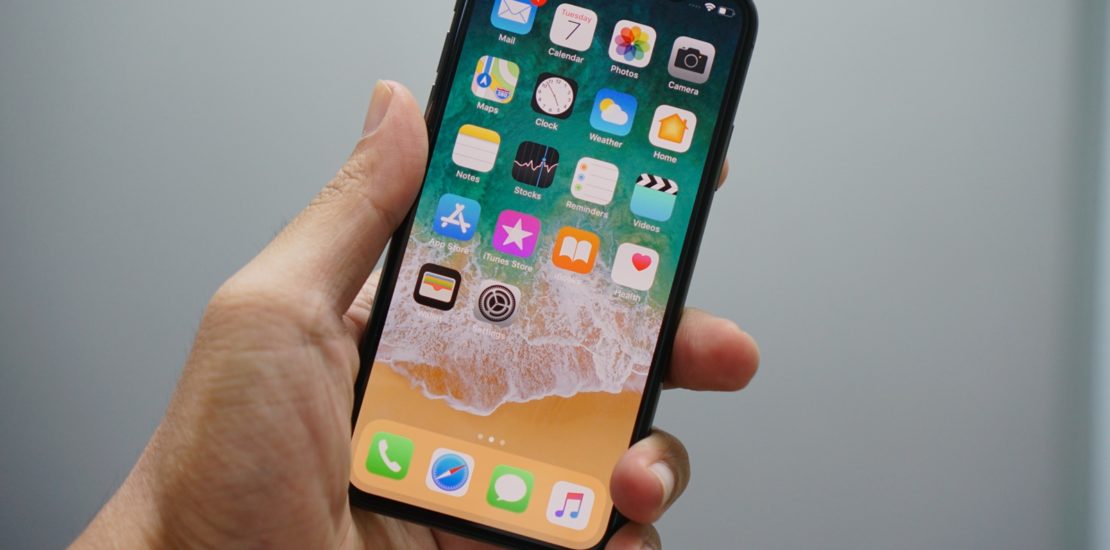- March 30, 2021
- Posted by: Turlock PC
- Category: Tips

In 2020, it was reported that Apple had surpassed over one billion iPhone users worldwide. With its sleek design, high quality camera, and user-friendly layout that features a variety of convenient customizations, it’s no surprise that this device has had such a widespread impact since it was first launched in 2007. From browsing the web and checking notifications on social media to replying to messages and even ordering food, the way in which we interact with our cell phones has evolved tremendously as well over the years. Our phones contain a huge amount of data about us, some of which is highly sensitive and should be kept confidential. With that being said, here are five tips that will help you keep your iPhone and all of your data within it secure.
Use a strong password instead of a 4 digit code
The first step to securing your iPhone is to use a strong password instead of a simple 4 digit pin code for unlocking your iPhone. As a rule of thumb, your password should include a combination of letters, digits and symbols. You should check to ensure that your device is set to require passcode immediately after your lock screen is shown. As an added measure of security, you can also turn the “erase data” feature on. This feature is designed so that the device will erase everything from its memory after 10 failed passcode attempts without the possibility to recover it. For this reason, this last tip may not be the best option for someone who forgets their password often or has small children who watch videos/play games on the same device.
Where can you set these requirements? Go to “Settings” –> “Passcode” (or “Touch ID/Face ID and passcode”) –> “Require passcode: immediately”; “Simple passcode: off”.
Turn on two-step verification for Apple ID and iCloud
There is no such thing as having too much protection when it comes to securing your devices. That’s why we highly recommend that you set up two-step verification whenever it’s available for Apple ID and iCloud. When you set up two-step verification, you register one or more trusted devices (devices that you control) to receive 4-digit verification codes using either SMS or the Find My iPhone service. Then, any time you sign in to manage your Apple ID, sign in to the iCloud, or make an in-app purchase from a new device, you’ll need to verify your identity by entering both your password and a new 4-digit verification code each time.
Where can you set these requirements? Go to https://appleid.apple.com –> “Manage your Apple ID” –> “Password and Security” –> “Two-Step Verification”.
Turn off cookies & the AutoFill option in your browsers
Cookies are small files which almost all websites generate and leave on your device. They may contain some information about you, your devices, and your preferences. It helps websites keep you logged in as well as to show you some relevant content including ads. However, they may also be very helpful to cybercriminals as they can contain credentials and other sensitive data. The same goes for the AutoFill option; if somebody has access to your iPhone, then chances are this person will be able to log in as you on a number of sites and apps. Although it may be inconvenient at first to turn both of these features off, it will be worth it to have that added level of protection when browsing the web.
Cookies: Where can you set these requirements? For Safari: Go to “Settings” –> “Safari” –> “Privacy & Security” section –> “Do Not Track: on”, “Block Cookies: Always Block”; For third party browsers: see similar browser settings.
Auto-fill: Where can you set these requirements? For Safari: Go to “Settings” –> “Safari” –> “General” section –> “Passwords & AutoFill”; For third party browsers: see similar browser settings.
Discard automatic WiFi connections to known networks
iPhones have a feature which allows you to automatically connect to known WiFi hotspots without your permission. Although this seems like a convenient option as it automatically switches you from mobile internet to local WiFi, using this feature can put you at risk of being hacked. Cybercriminals have been known to establish fake wireless networks under the same name as trusted public hotspots to gather data from unsuspecting users. In this scenario you might not even recognize that your iPhone is working within the malicious WiFi network, giving away all of your data to the scammer. That’s why we recommend that you either be very aware of every WiFi hotspot you are in, or turn this option off entirely.
Where can you set these requirements? Go to “Settings” –> “Wi-Fi” –> “Ask to join networks: on”.
Disable Siri on a lock screen
Siri is another useful feature for iPhone users that can sometimes give away too much information. It’s not necessary to turn it off completely, but you will be much more secure if you prevent it from activating from a lock screen or on a “Hey Siri” voice command. It’s important to remember that Siri can communicate with anyone and not just with an owner of the device it works on.
Where can you set these requirements? Go to “Settings” –> “Passcode” (or “Touch ID and passcode”) –> “Allow access when locked” section –> “Siri: off” and “Settings” –> “General” –> “Siri” –> “Allow “Hey Siri”: off”.
